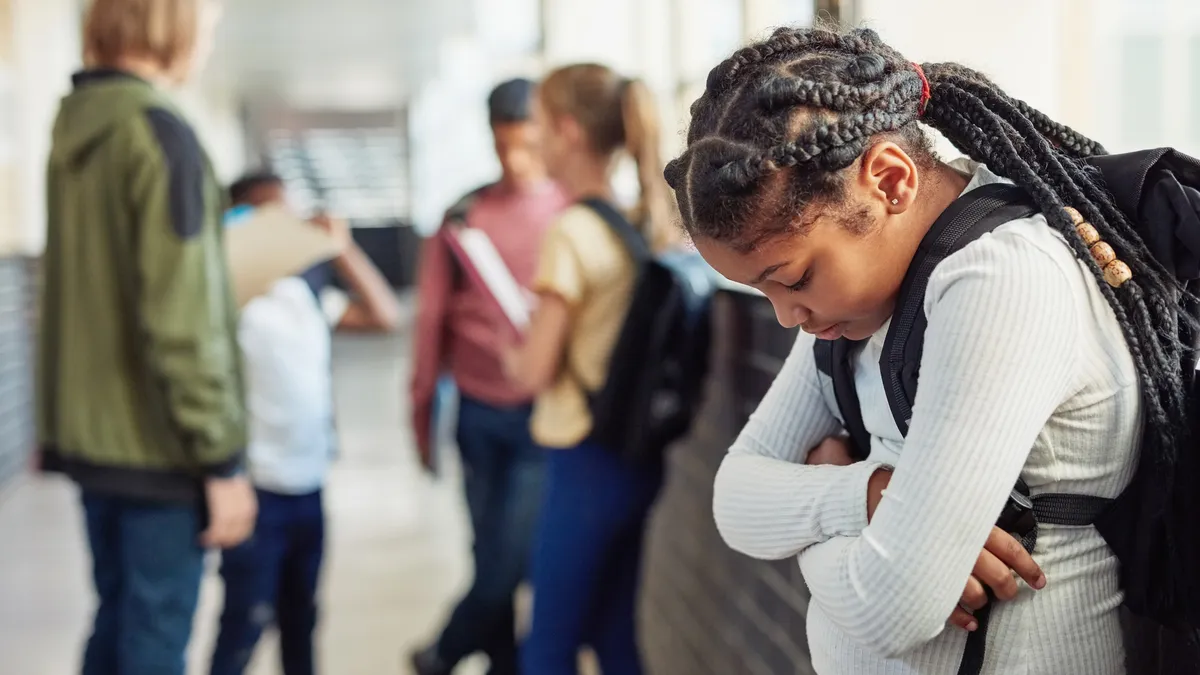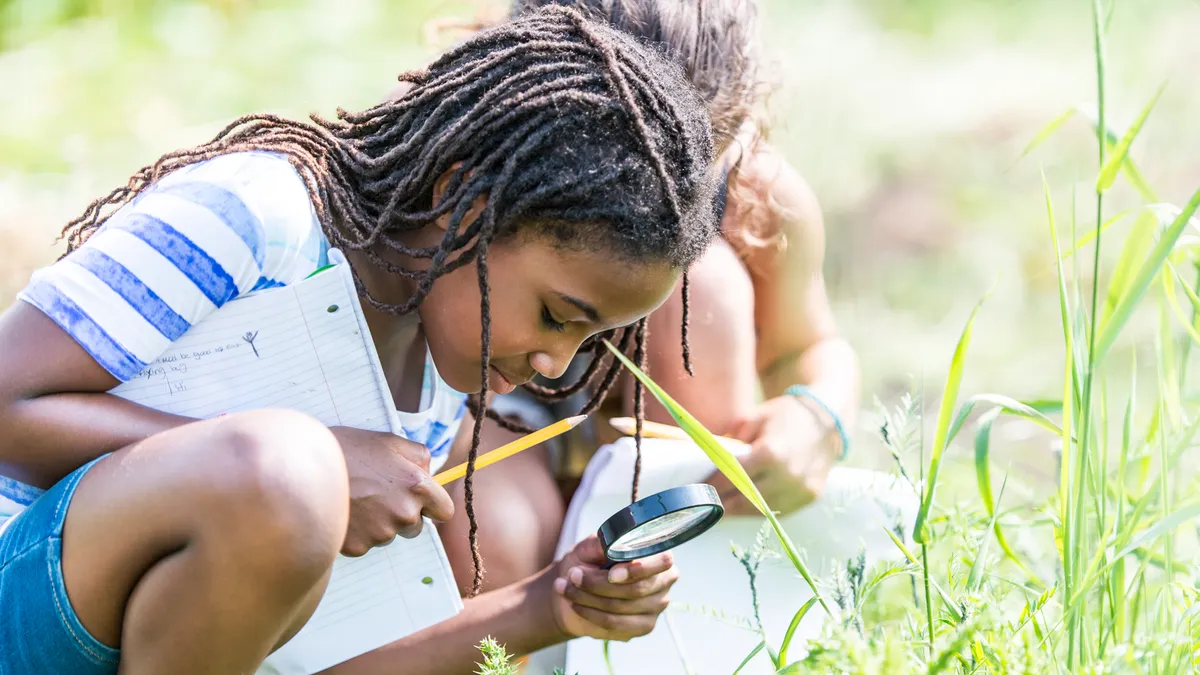Suzanne Freedman is a big fan of the children's book “Spaghetti in a Hot Dog Bun” — not for the menu suggestion, but for what the story teaches about forgiveness. In the tale, a young girl bullied for her hair and her choice of lunches treats her bully with kindness when he needs help.
“She has a choice to help a bully or not,” says Freedman, a professor of human development and interpersonal forgiveness at the University of Northern Iowa. “And she helps him.”
To Freedman, it’s clear: Bullying is wrong and should not be tolerated. But Maria Dismondy’s book illustrates a pivotal moment that any student — or any adult — can follow, which is how understanding another person’s behavior can help you forgive.
Nationally, about 19% of students between the ages of 12 and 18 reported they were bullied in the 2021-22 school year. Topping the list includes being the subject of rumors, being called names or insulted, and physically being shoved, pushed or spat on, according to the National Center for Education Statistics.
Other conflicts that can arise among classmates — from elementary to high school — are disagreements and social dynamics where feelings can lead to frustration, anger and acting out. There are multiple approaches on how to help students work through these moments, experts say. Educators say these paths can help teach students how to apologize and forgive — and to prevent some disagreements in the first place.
Uncomfortable emotions
Freedman, who has developed an open source elementary school curriculum called “The Courage to Forgive,” says that before forgiveness can occur, students need to consider what may have brought them into conflict in the first place — which could simply be feeling hurt. Freedman says educators should assure pupils that everyone gets hurt, and the key is learning how to cope with hurt rather than holding on to anger.
“We start with anger,” says Freedman. “It’s important that kids know that anger is a normal and natural feeling. It’s what you do with your anger that’s considered good and bad, and we talk about healthy ways to express anger.”
Freedman is concerned that people think anger and sadness are negative emotions. However, allowing students to explore their anger is the first phase of the forgiveness process.
To help students accept that anger is normal, Freedman encourages educators to refer to these feelings as “uncomfortable emotions.” She has concerns that by calling these emotions negative, students begin to think that feeling sad or angry or having anxiety is not normal, which can create other issues.
“We’re having a mental health crisis, and we have to help kids handle emotions,” Freedman says. “We have to teach them to sit and deal with their pain.”
Freedman also cautions educators against pushing students to quickly apologize and forgive when a conflict has occurred, regardless of whether the dispute is a verbal disagreement or bullying. She says that by speeding through that process, students may not have time to own an apology or be ready to accept one and have to swallow their feelings.
She applauds the example of one superintendent who had students write an essay about what they did rather than assigning them detention or having them swiftly apologize without understanding the other party's feelings.
“Kids should be encouraged to apologize when they feel it and mean it,” Freedman says. “Then the child victim could say, ‘I appreciate your apology, and I am working on forgiving you. I’m not there yet. You hurt me, and it’s going to take me a minute.’”
Teaching perspective
Apologies are essential to helping students who feel harmed move forward, says Kelly Lynn Mulvey, an associate professor of psychology at North Carolina State University. Mulvey has found in research that data shows students feel better after and appreciate apologies.
“They’re more willing to reconcile with those peers,” Mulvey says. “It helps them to forgive when someone apologizes.”
Rather than encourage students to apologize quickly and for others to accept the apology, Mulvey, a former high school teacher in North Carolina’s Durham Public Schools, suggests that educators may be able to take steps to reduce conflicts in their classroom.
She says educators could consider bringing in conflict resolution skills and encourage perspective-talking throughout the classroom. These social-emotional learning tools could, for example, be seeded into the classroom or assigned reading material. A history teacher could ask students to think about what a historical figure may have felt during specific moments in time. A science educator could ask pupils to consider the perspective of scientists and the barriers they faced.
“I would encourage teachers to think of spaces where opportunities for SEL exist, and also look for evidence-based curriculum to build perspective taking and emotional regulation,” Mulvey says.
Mulvey also suggests that schools consider working with restorative justice and peer mediation partners to help classes share and converse with those who have engaged in harmful behavior rather than just handing out consequences and punishment. However, she notes, students should never be required to engage with someone who has bullied them, as they need to feel they also have some power in the process.
“Especially with bullying, which can be a power dynamic,” Mulvey says, “the victim needs to have some say to be able to decline and have agency, as they may not feel comfortable, especially if this has been repeated.”
Stop, think, go
Another approach, says Pamela Randall, senior staff advisor for the Collaborative for Academic, Social and Emotional Learning, is to create a shared agreement with students at the start of a school year. While this doesn’t ensure conflicts will never arise, it serves as a building block to a group community filled with respect.
Randall cautions that these agreements shouldn’t be long. She says something more reasonable is five or maybe six items that the class feels comfortable accepting. Educators still need to be ready for when disagreements arise.
“We know the reality that sometimes students and adults do not follow these agreements,” she says.
One strategy Randall likes to share is from CASEL’s co-founder Roger Weissberg and builds from a “stop-light” approach. When there is a conflict, someone stops, takes a breath, thinks about their feelings, considers the situation, and takes a path that has the best consequences.
“We want to teach students that when they do come upon a conflict — maybe you pulled a toy from a classmate or said something mean and lashed out — how can you repair the harm?” she says.
These moments when an agreement has been broken can have consequences, but Randall says these remediation efforts need to be “reasonable” and also “done with empathy and understanding.”
She says that the goal — whether someone needs to apologize or is the person being apologized to — should be to rebuild a community with respect.
“What steps and support do we need for a classmate to get them back into the community while respecting the student who was harmed,” she says. “It’s about the restorative practices that are important for all parties.”




















